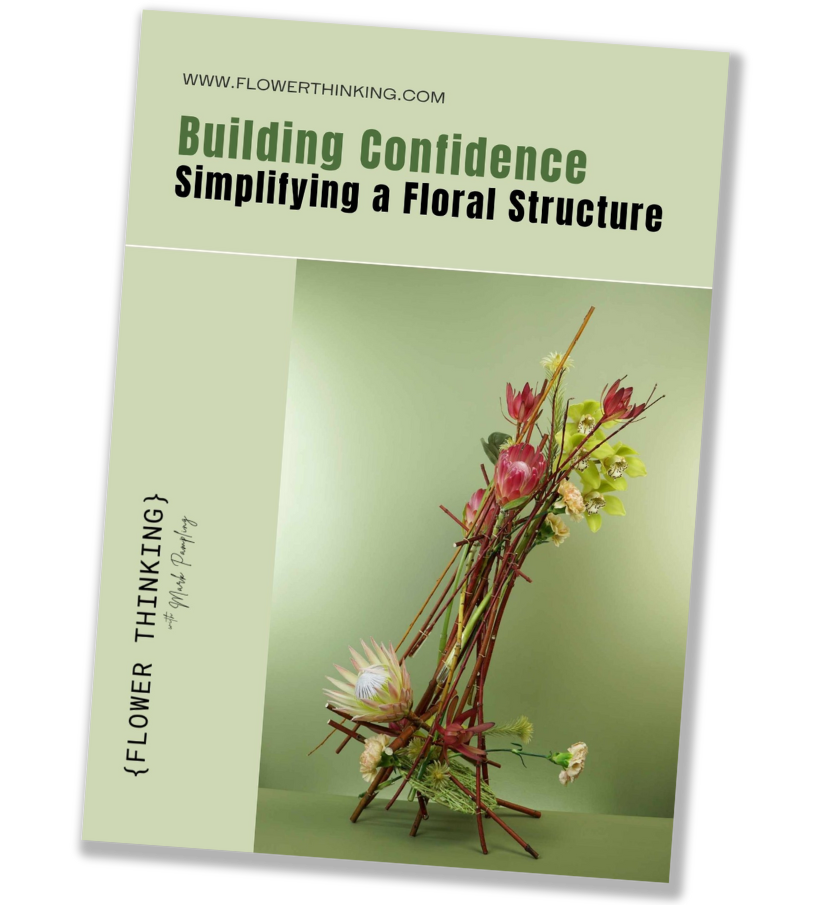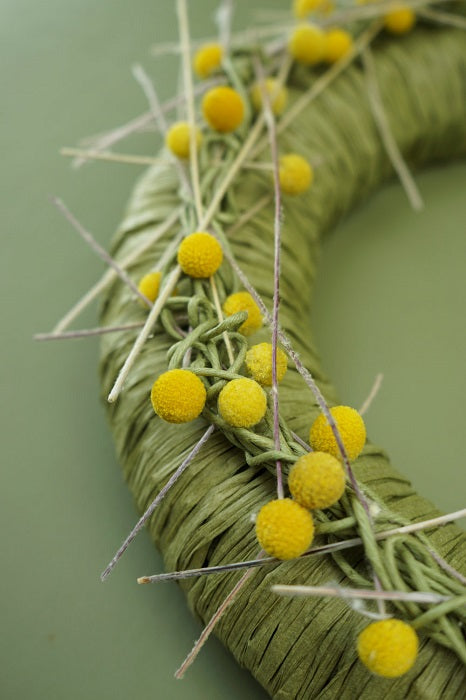
Design Solutions
Pare Back Material Choices and Focus on Design Principles
Abundant material variety can be a distraction from the work of applying design principles.
Design Solutions strips away the distraction, helping us focus on using the elements and principles to solve design problems.
We complete four design challenges - an arrangement, a bridal design, an overlapping design and a wreath - all using just two main botanicals.
Along the way we learn to solve design problems by reaching for design principles instead of materials.
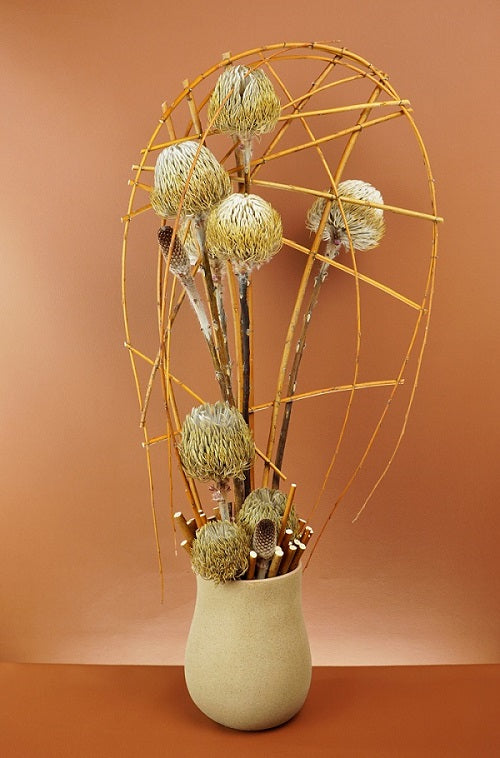
A rustic arrangement of Banksia and Willow in an earthy ceramic container, incorporating an elliptical structure made using the paper covered wire and the binding technique.
Banksia baxteri, Salix alba
Design – Mark Pampling
Photography – Mark Pampling

Posy style bridal design created on a base of wire spokes, decorated with whole and segmented Banksia, Banksia leaves and sections of Willow stems.
Banksia baxteri, Salix alba
Design – Mark Pampling
Photography – Mark Pampling

Banksia and Willow stems are organised in an overlapping system, elevated on stub wires anchored into a wooden base using the hammering technique.
Banksia baxteri, Salix alba
Design – Mark Pampling
Photography – Mark Pampling
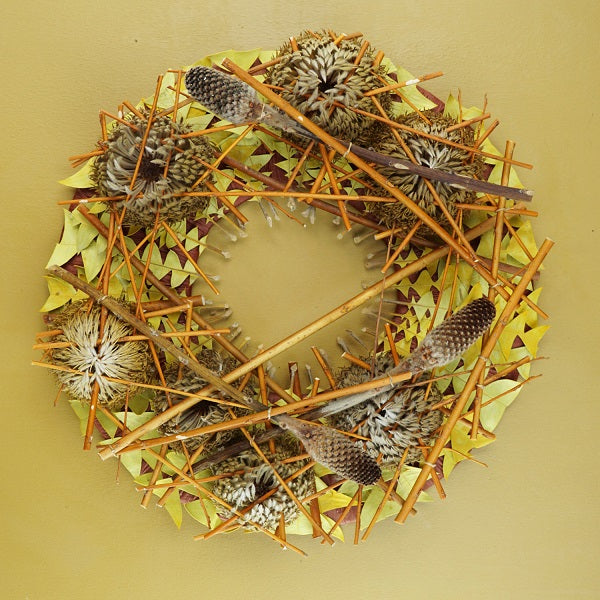
A contemporary wreath design layered on a flat, paper- covered base, utilising Banksia heads, cores and leaves and lengths of Willow.
Banksia baxteri, Salix alba
Design – Mark Pampling
Photography – Mark Pampling

A classic dome of Carnation heads is finished with a single Syngonium leaf, and a draping trail of Carnation stem pieces joined together with the garlanding technique.
Dianthus, Syngonium
Design – Mark Pampling
Photography – Mark Pampling
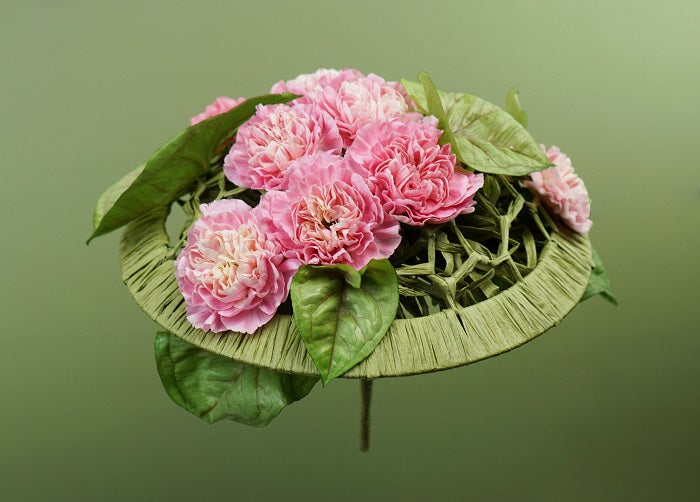
A contemporary wired bridal posy, incorporating a structure using the handmade chicken wire technique and paper raffia.
Dianthus, Syngonium
Design – Mark Pampling
Photography – Mark Pampling
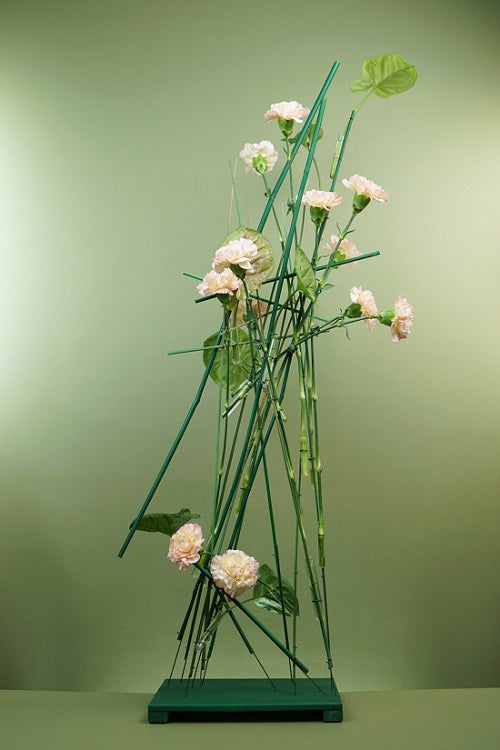
A wooden panel and stub wires are the base foundation to support the elevated Carnation stems and Syngonium leaves in this overlapping design.
Dianthus, Syngonium
Design – Mark Pampling
Photography – Mark Pampling
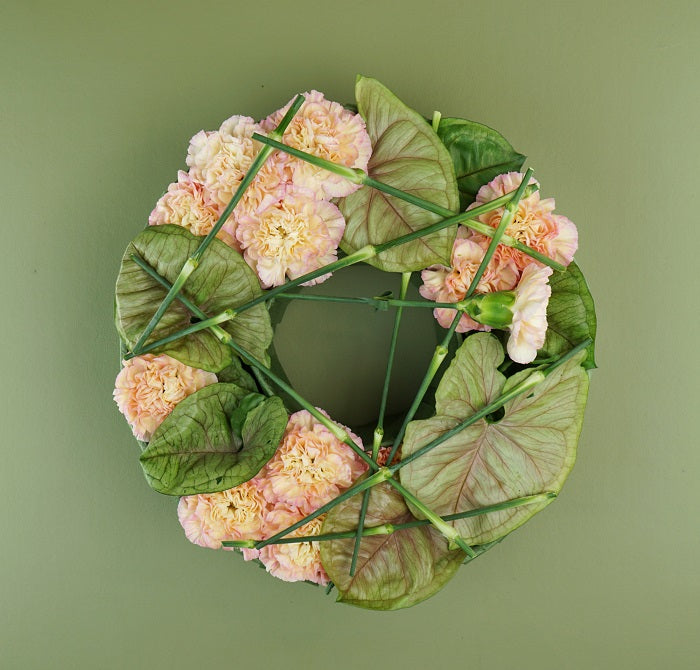
A grouped wreath of Carnation heads and variegated Syngonium leaves, finished with a layer of overlapping Carnation stems.
Dianthus, Syngonium
Design – Mark Pampling
Photography – Mark Pampling
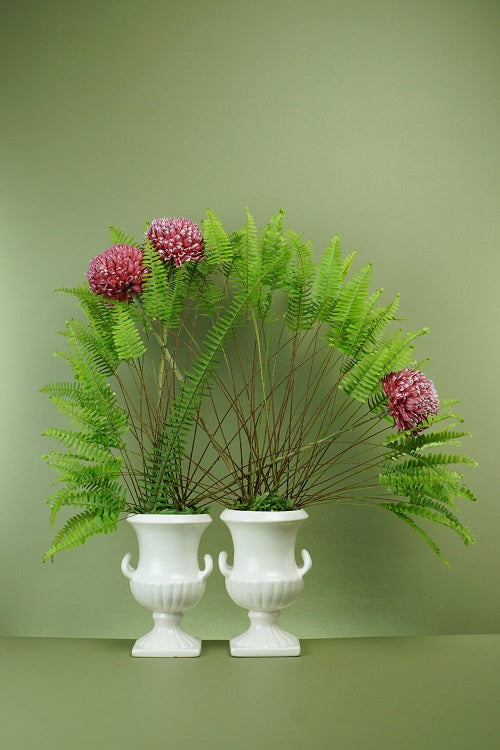
Asymmetrical fan design of overlapping stems in twin containers. The removal of the lower foliage on both the Chrysanthemum and the fern makes the crossing stems more of a design feature.
Nephrolepis, Chrysanthemum
Design – Mark Pampling
Photography – Mark Pampling
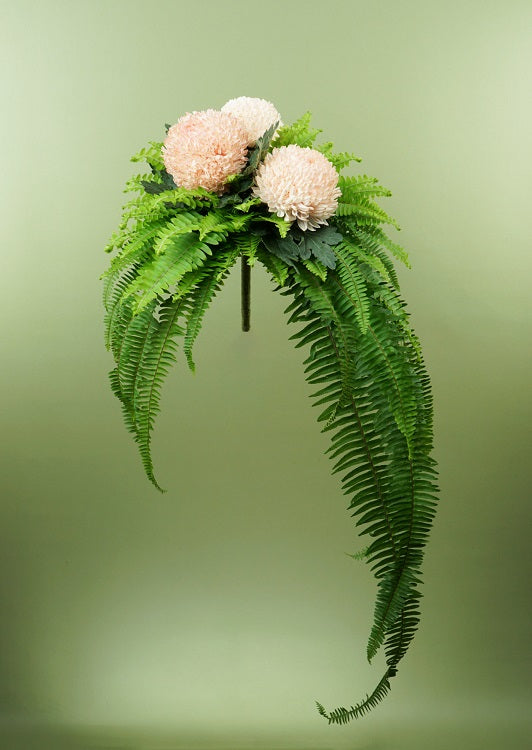
Asymmetrical bridal bouquet of trailing Fern topped with a cluster of Disbud Chrysanthemum and their own foliage.
Nephrolepis, Chrysanthemum
Design – Mark Pampling
Photography – Mark Pampling
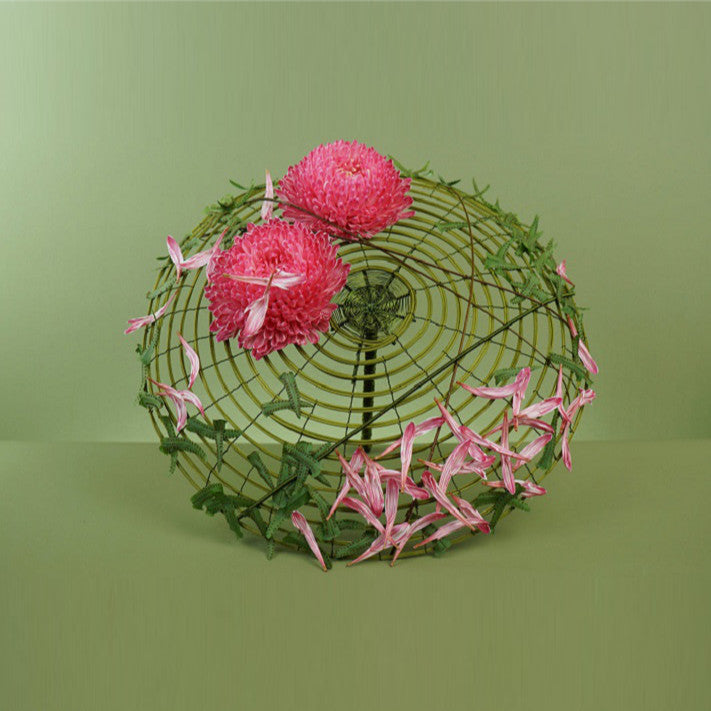
Contemporary bridal posy of blooms and petals, and the leaflets and stems of Sword Fern - created on a shallow dome structure of thin round core cane and decorative wire crafted using the Tatami technique.
Nephrolepis, Chrysanthemum
Design – Mark Pampling
Photography – Mark Pampling
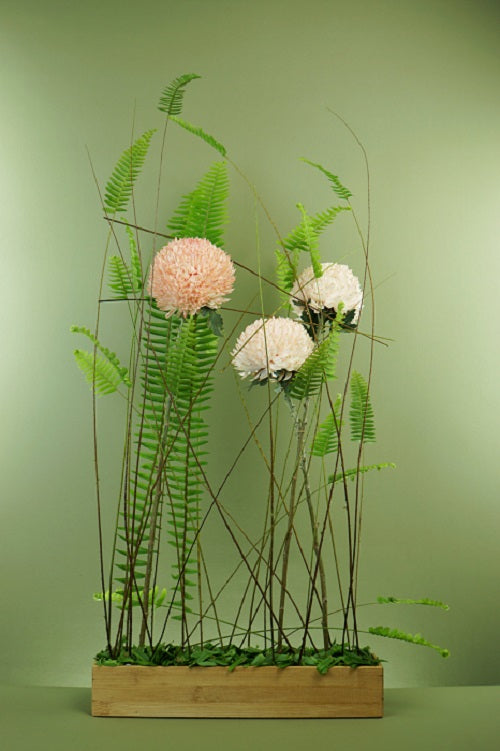
A vertical design with very shallow depth. The foliage has been stripped from most stems, allowing the eye to see the overlapping system that is used to arrange them.
Nephrolepis, Chrysanthemum
Design – Mark Pampling
Photography – Mark Pampling
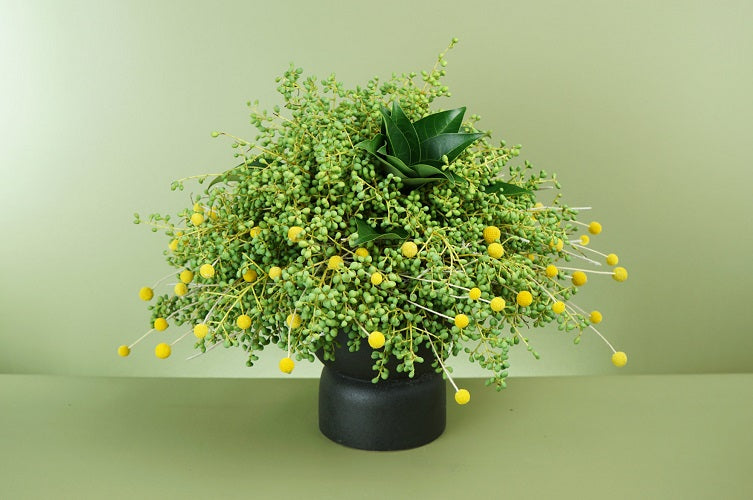
Classically inspired, hemispherical arrangement of massed Privet Berries, with a rosette of Privet leaves. The lower perimeter is threaded with miniature Craspedia.
Ligustrum/Privet, Craspedia
Design – Mark Pampling
Photography – Mark Pampling
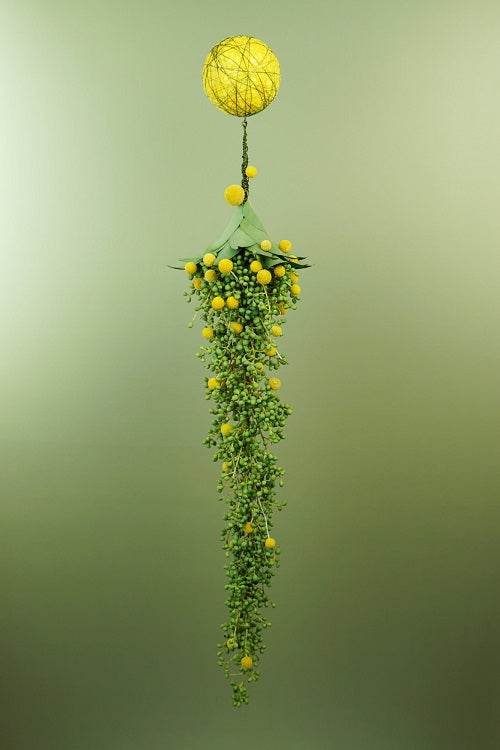
Trailing bridal bouquet, designed to sit in the palm of the hand, slip through the fingers and hand gracefully below.
Ligustrum/Privet, Craspedia
Design – Mark Pampling
Photography – Mark Pampling
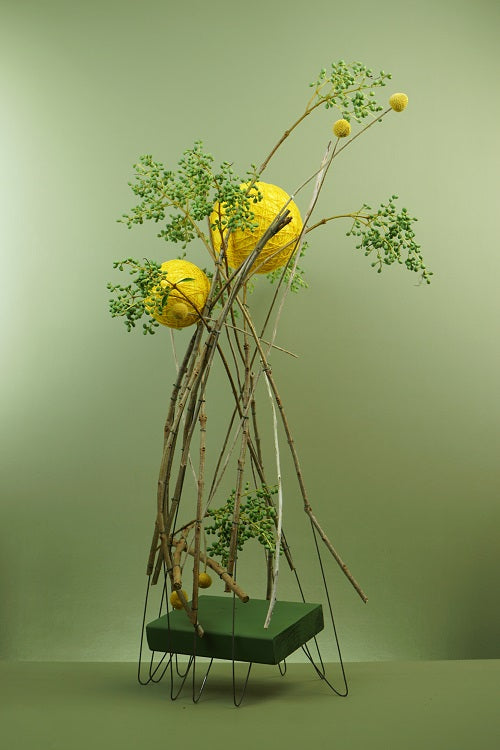
Freestanding design on wire legs, created using the hammering technique. A strong upper area of interest is created with some covered spheres that repeat the colour of the Craspedia, and the shape of both the Craspedia and Privet berries.
Ligustrum/Privet, Craspedia
Design – Mark Pampling
Photography – Mark Pampling
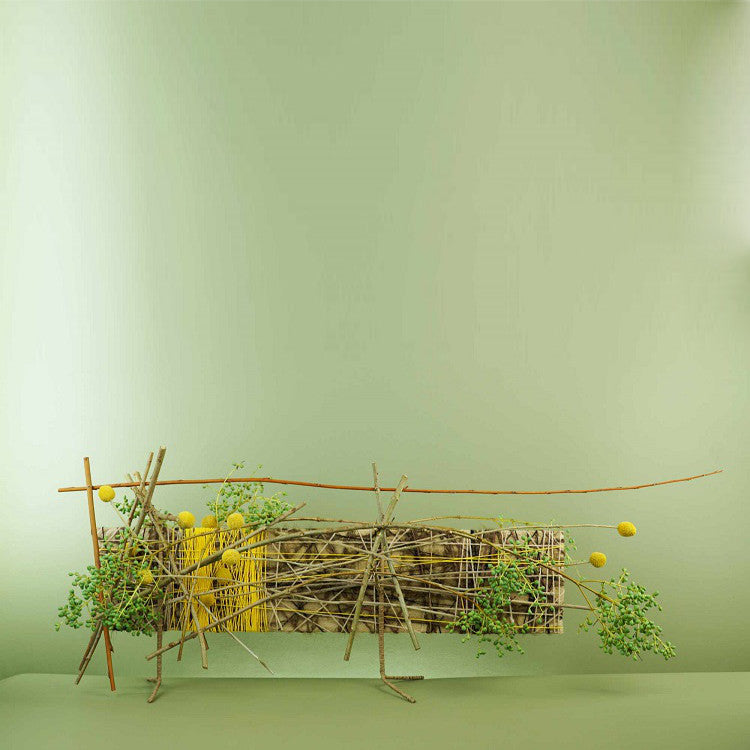
A low horizontal design created around a decorative panel. The panel is made from cardboard, wrapped in paper and then wrapped in layers of various fibres.
Ligustrum/Privet, Craspedia
Design – Mark Pampling
Photography – Mark Pampling

A classically inspired design of Spanish Moss and Black Willow. Some Moss has been bound to a circular form with bullion wire and wool to create an area of visual interest in the upper section.
Tillandsia usneoides, Salix
Design – Mark Pampling
Photography – Mark Pampling
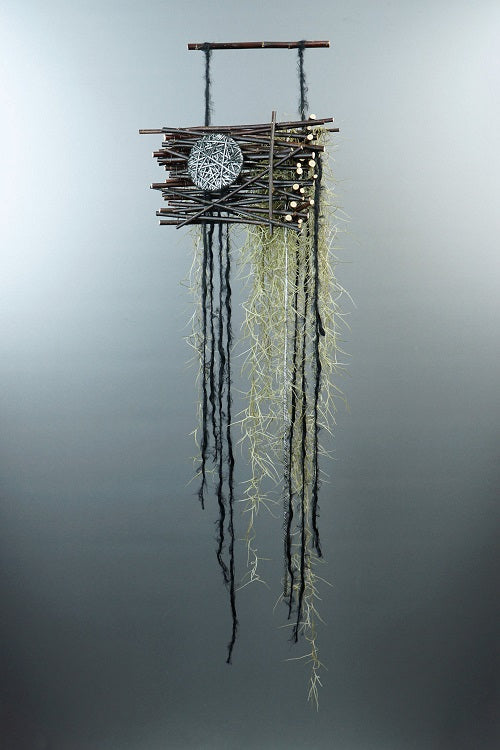
Hanging bridal design with layers of Spanish Moss and textured wool strands. The upper structure is a triangular box shape, made of short willow stems and decorated with a medallion of wrapped, metallic wool.
Tillandsia usneoides, Salix
Design – Mark Pampling
Photography – Mark Pampling

Wreath design built on a base of wire rings that has Spanish Moss layered between lines of wire. It’s finished with overlapping stems of Black Willow, metallic wool medallions and some free hanging trails of Moss.
Tillandsia usneoides, Salix
Design – Mark Pampling
Photography – Mark Pampling
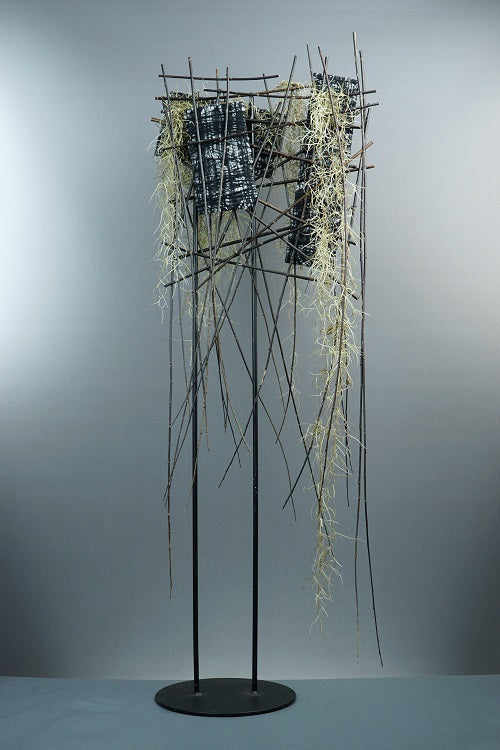
Overlapping design on a metal stand, incorporating rectangular shapes wrapped in paper and fibres which add areas of solidity that contrast against the transparency of the Moss and network of fine Willow stems.
